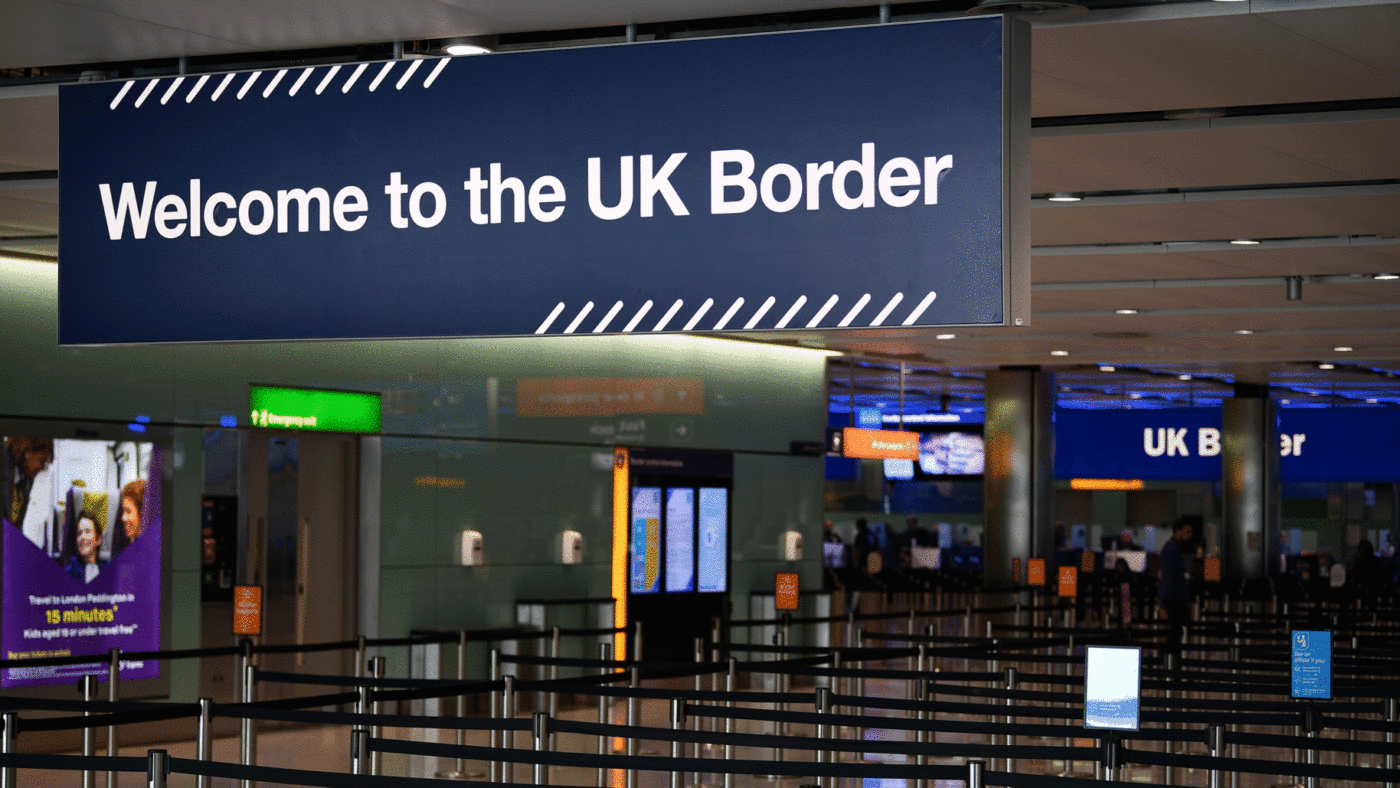Almost six years have passed since the British people voted to leave the EU following a campaign that focused heavily on immigration policy. Now, over a year after the end of the transition period, we are starting to see the effects of Britain’s post-Brexit migration system.
The crucial difference from before 2021 is that both EU and non-EU migrants must now meet the same threshold – they must have a job offer, speak English and earn at least £25,600 (although for some industries, notably education and healthcare, the income threshold is lower).
Those rule changes appear to have already had a pronounced effect on migration trends. Recently published Home Office figures showed a steep decline in EU net migration, offset by a continuous increase of non-EU net migration – primarily driven by migrants coming from India, China and Nigeria.
Indian citizens were the top nationality to be granted work visas in the UK in 2021. We can expect this number to continue to rise, especially since there are indications that future trade talks may also involve easing migration rules for Indian citizens. Last year also sawa record number of Chinese students apply to British universities. Finally, we saw a 28% increase in work visas granted to Nigerian nationals, and a staggering 347% increase in student visas granted to Nigerian students.
Those increases have been mirrored by a longer-term decline in EU nationals coming to these shores. In 2019, overall net migration to the UK was estimated to be 270,000. That same year, EU net migration was only 49,000 – a significant drop from 2015, when EU net migration was around 200,000. Perhaps more shockingly, 2020 saw negative net migration from the EU for the first time in 30 years. While 2020 data is likely to be impacted by Covid, the decrease of EU net migration seems to have continued last year.
Are these trends likely to continue?
As Covid restrictions are lifted globally, will Britain go back to its patterns whereby EU migrants dominate, or will non-EU migration continue to rise? While definitive predictions are hard to come by, there are at least four reasons to think that migration composition of the UK is likely to shift.
First, various delays and procedural mishandlings seem to have deterred EU citizens from coming and staying in the UK. The foul-ups have been so numerous that the Independent Monitoring Authority for the Citizens’ Rights Agreements (IMA) – a statutory body set up to protect the rights of EU citizens after Brexit – launched legal action against the Home Office last December.
Equally, the fact EU citizens have to apply for a visa at all is a huge turn-off, given that they have 26 other states where they can live and work without any restrictions.
Second, there is some suggestion that anti-EU sentiment during the campaign has put off some Europeans from moving here. Although about 5 million people applied for ‘settled status’, there is some evidence that the campaign has persuaded others to move back to the continent. Research published last year by the IMA suggested one in 10 EU nationals in the UK were ‘considering leaving after 30 June 2021, the deadline for applications to remain lawfully in the country post-Brexit’. InLimbo – a non-profit project set up with the purpose of assisting EU citizens in the UK and British citizens in the EU – reached similar conclusions regarding EU citizens’ willingness to stay or come to the UK in the aftermath of Brexit.
The third factor weighing on EU migration is that the UK labour market no longer discriminates in their favour, meaning they face much stronger competition for visas and jobs from non-EU nationals. It seems likely many EU citizens either won’t apply or wont’ be successful in their job applications. Indeed, many industries have already suffered shortages and struggled to fill in vacancies, arguing that the lack of EU applicants has caused this.
The fourth and final factor is that EU citizens have lost their privileged status when it comes to university tuition fees, resulting in a sharp drop in the number of European students coming to study to the UK. According to data provided by the University of East Anglia, 2021 saw a 50% drop in the number of EU students.
All in all, it seems likely that the UK’s migration picture will change in the coming years. What impact this may have on Britain’s economy or cohesiveness of its neighbourhoods remains to be seen. It is therefore vital for the Government to continuously monitor the possible effects of these changing migration trends and should the need arise promptly respond.
Click here to subscribe to our daily briefing – the best pieces from CapX and across the web.
CapX depends on the generosity of its readers. If you value what we do, please consider making a donation.


